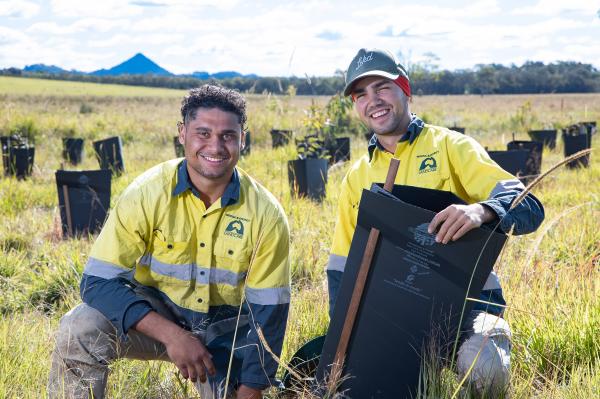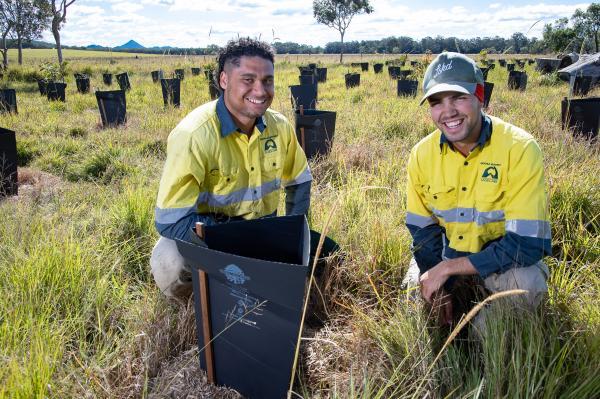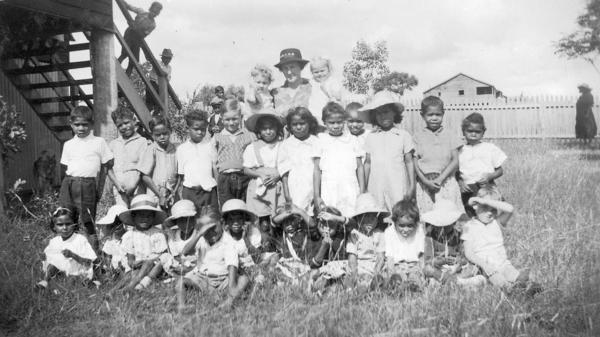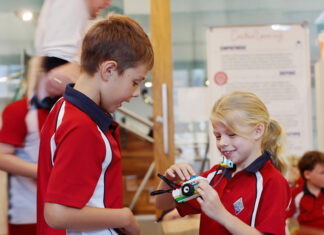
An ambitious Indigenous tourism initiative may help to see the resettlement in Noosa of Kabi Kabi families whose descendants were forcibly removed from their traditional country more than a century ago.
Already several young Kabi people from the Cherbourg Aboriginal Community, two hours west of Noosa, are living in the shire during the week while completing land management traineeships working with Noosa and District Landcare at Pomona. And while the community groups working on the resettlement concept are reluctant to discuss details at this very early stage, Noosa Today understands that the Landcare traineeships are regarded as a pilot program for what might develop.
In an exclusive interview with Noosa Today this week, Noosa Shire Council CEO Brett de Chastel said: “We’ve been in conversations with the Kabi Kabi about the Yurol/Ringtail Creek area and how guided tours might evolve there. There’s a large cohort of Kabi that live at Cherbourg who are from country and want to return (to Noosa), and while there would be many avenues of employment for them, educational tourism is certainly a big one. One of the major growth areas of tourism is experience travel, and the more local and authentic it is, the more people love it. The Indigenous stories that can be tapped into locally are wonderful and we believe there are unbounded opportunities.”
Tourism Noosa’s Indigenous Tourism manager Juanita Terry Bloomfield said that, funding permitting, she was looking at a five-year plan to upskill and employ as many as 15 Kabi cultural tour guides who would work in different parts of the extensive Noosa Trail Network as well as the Noosa Headland walk. “Obviously, there are a lot of variables to consider at the moment, but I think that is a realistic time frame,” she said. “There is certainly the will to make it happen. As far as resettlement of families is concerned, that would be something for careful consideration by the Kabi community, but providing local share accommodation for individual tourism workers makes a lot of practical sense.”
Although the stakeholder groups recently missed out on a substantial government Indigenous tourism grant to establish the Headland walks program, Ms Terry Bloomfield and Kabi spokesperson Brian Warner were deep in talks with Noosa Council representatives last week about furthering the scheme. But all involved have emphasised that the sensitivity surrounding the idea of resettlement means that progress will be slow and careful. They also stressed to Noosa Today that the Indigenous tourism initiatives and the idea of resettlement were in no way interdependent.
To understand why return to country is such a sensitive and emotive issue, you only have to look at history. In the late 1890s there were thought to be several hundred Kabi Kabi living in the area that would become Noosa Shire, far outnumbering the European population, but a decade later there were none, due to the passing of the Queensland Aboriginals Protection Act of 1897.
This disgraceful legislation was the handiwork of one Archibald Meston, who had been appointed “Southern Protector of Aborigines” while still running a “Wild Australia” touring show that blatantly exploited them. Meston recommended that First Nations people be segregated from the European population to protect them from alcohol and opium and give them “instruction in industrial habits”.
From 1901 the Kabi Kabi and other southern Queensland Indigenous groups were forcibly removed from their homes and settled on a section of the Barambah Station that became known as Barambah Industrial School, although it was run as a mission by the Salvation Army and very little was taught there, even when it was taken over by the government. The name was later changed to Cherbourg. For decades the Cherbourg population suffered poor rations, little or no health care and were hired out as slave labour on surrounding stations.
Today at Cherbourg the Ration Shed Museum stands as a testament to those sorry times, but while self-government as Queensland’s most southerly Aboriginal Shire Council has fostered pride and a sense of community, the sad fact is that Cherbourg is Australia’s most disadvantaged community, while Noosa is among the most advantaged. The most recent Socio-Economic Index for Australia (SEIFA) 2016 lists Cherbourg last in economic resources and education, resulting in significant attendant social problems. Almost half the descendants who make up the Kabi Kabi Native Title claim currently live in Cherbourg.
Interaction between the communities of Noosa and Cherbourg is not a new idea. Sporting ties were pioneered by Noosa Heads surf club, which organises surfing and swimming trips to the coast for disadvantaged kids, while on the political level, during the last Noosa Council, the mayors of the two shires formed closer ties and jointly presented a motion of support for the Uluru Statement From The Heart at the Local Government Association of Queensland annual conference last October. It was overwhelmingly passed.
Meanwhile, a position paper for submission to the New Noosa Plan on the feasibility of establishing a Kabi Kabi Indigenous housing trust within the shire was presented to Noosa Council last year.
Hopefully now the scale of Noosa’s Indigenous tourism initiative takes the potential for closer ties, employment, and, eventually, for a return to country for those who desire it, to a new and historic level.








